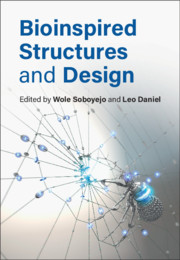Book contents
- Bioinspired Structures and Design
- Bioinspired Structures and Design
- Copyright page
- Contents
- Contributors
- Preface
- Part I Materials
- 1 Bioinspired and Biomimetic Design of Multilayered and Multiscale Structures
- 2 Human Cortical Bone as a Structural Material
- 3 Bioinspired Design of Multilayered Composites
- 4 Bamboo-Inspired Materials and Structures
- Part II Structures
- Part III Natural Phenomena
- Index
- References
4 - Bamboo-Inspired Materials and Structures
from Part I - Materials
Published online by Cambridge University Press: 28 August 2020
- Bioinspired Structures and Design
- Bioinspired Structures and Design
- Copyright page
- Contents
- Contributors
- Preface
- Part I Materials
- 1 Bioinspired and Biomimetic Design of Multilayered and Multiscale Structures
- 2 Human Cortical Bone as a Structural Material
- 3 Bioinspired Design of Multilayered Composites
- 4 Bamboo-Inspired Materials and Structures
- Part II Structures
- Part III Natural Phenomena
- Index
- References
Summary
Bamboo is a group of perennial grasses in the family Poaceae, subfamily Bambusoideae, tribe Bambuseae [1]. One estimation classified bamboo into 75 genera and approximately 1,500 species [1]. The ordinary species of giant bamboo includes Phyllostachys heterocycla pubescens (Moso), Bambusa stenostachya (Tre Gai), Guadua angustifolia (Guadua), and Dendrocalamus giganteus (Dendrocalamus). Moso is the most widely distributed bamboo for utilization [2]. This species is native to China, and was introduced to Japan in about 1736 and to Europe before 1880 [2]. The word, moso (in Japanese) or mao zhu (in Chinese), means hairy culm sheaths and this bamboo is named for the pubescent down at the bottom of its new culms.
- Type
- Chapter
- Information
- Bioinspired Structures and Design , pp. 89 - 110Publisher: Cambridge University PressPrint publication year: 2020
References
- 5
- Cited by

